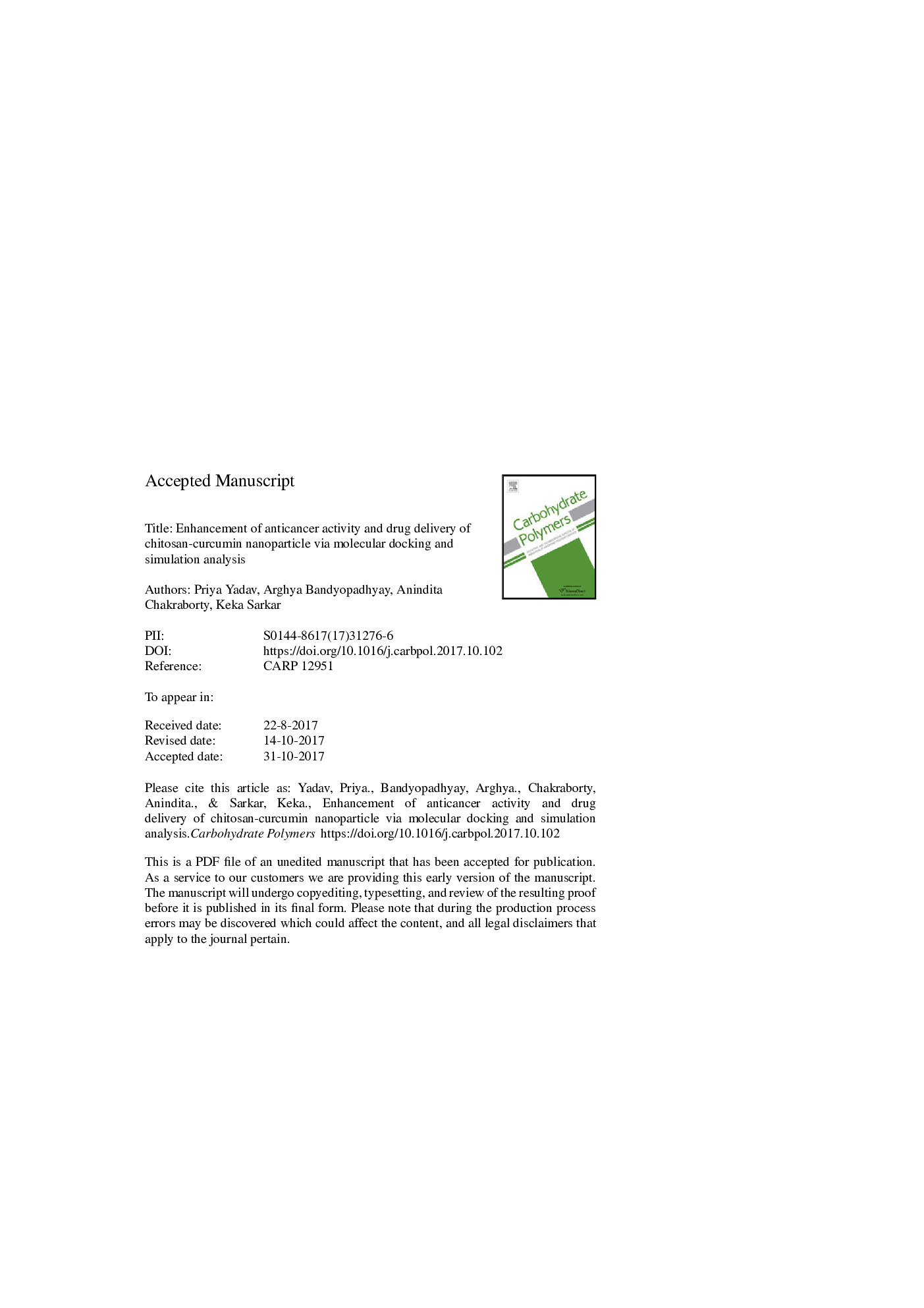| Article ID | Journal | Published Year | Pages | File Type |
|---|---|---|---|---|
| 7784375 | Carbohydrate Polymers | 2018 | 22 Pages |
Abstract
Computational analyses followed by traditional wet-bench experiments have become a method of choice due to successful results. To enhance the solubility and bioavailability of curcumin within chitosan nanoparticle, we have exploited computational methodologies i.e. docking, BBD-RSM and MD simulation for the polymer selection, NPs' formulation, optimization and their stability confirmation in an aqueous medium, respectively. Formulated CSCur NPs were assessed for in-vitro release, which exhibited a sustained release pattern and four-fold higher cytotoxic activity in a nanoparticulated system. Enhanced uptake, apoptotic effect of CSCur NPs were established by morphological changes in cells as observed by fluorescence microscopy and FE-SEM. DNA damage, cell-cycle blockage and elevated ROS levels further confirm the anticancer activity of the CSCur NPs following apoptotic pathways. In-vivo study on Danio rerio, for uptake and toxicity reveal the particle's biocompatibility and nontoxicity. Therefore, CSCur NPs could be the potential formulation for a safe chemotherapeutic drug for cancer.
Related Topics
Physical Sciences and Engineering
Chemistry
Organic Chemistry
Authors
Priya Yadav, Arghya Bandyopadhyay, Anindita Chakraborty, Keka Sarkar,
